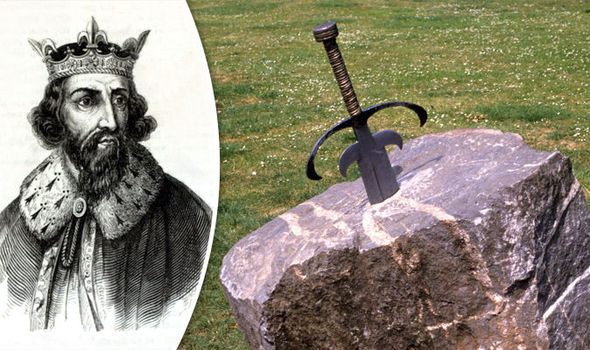-
Tips for becoming a good boxer - November 6, 2020
-
7 expert tips for making your hens night a memorable one - November 6, 2020
-
5 reasons to host your Christmas party on a cruise boat - November 6, 2020
-
What to do when you’re charged with a crime - November 6, 2020
-
Should you get one or multiple dogs? Here’s all you need to know - November 3, 2020
-
A Guide: How to Build Your Very Own Magic Mirror - February 14, 2019
-
Our Top Inspirational Baseball Stars - November 24, 2018
-
Five Tech Tools That Will Help You Turn Your Blog into a Business - November 24, 2018
-
How to Indulge on Vacation without Expanding Your Waist - November 9, 2018
-
5 Strategies for Businesses to Appeal to Today’s Increasingly Mobile-Crazed Customers - November 9, 2018
Palace discovered at Tintagel, fabled birthplace of the legendary King Arthur
Its role as the possible birthplace of King Arthur merely adds fuel to the fire for historians, archaeologists, and tourists alike. Then followed Lord Alfred Tennyson’s Idylls Of The King, a now classic work of poetry detailing the legends of King Arthur.
Advertisement
However, archaeologists have discovered the ancient remains of a palace next to the site.
Earlier excavations had uncovered numerous pieces of pottery at Tintagel. It is purportedly the site of Arthur’s conception and birth, as the fabled story goes that Uther Pendragon infiltrated the castle to bed Lady Igraine, the Duke of Cornwall’s wife and Arthur’s mother.
Scholars have long debated whether King Arthur was a mere myth or an actual person. Perhaps. Or the archaeological finds at Tintagel Castle could simply be the ruins and artifacts of those who built a palace at the same site prior to the castle erected by Richard, Earl of Cornwall, in the 13th century.
King Arthur was not connected to Tinatagel Castle until Geoffrey of Monmouth’s 12th century fictional account of the history of Britain, Historia Regum Britannia.
But now it seems as archeologists have found evidence of the palace at Tintagel. Although King Arthur supposedly won a series of 12 battles against the Anglo-Saxon warlords, his name is absent from the only surviving contemporary history of the invasion.
It is thought the walls formed part of the seat of the rulers of the early medieval kingdom of Dumnonia.
Principal archaeologist at Cornwall Archaeological Unit (CAU), Jacky Nowakowski, is directing the excavation team.
In addition to the large stone structures, the archaeologists unearthed more than 200 artifacts including shards of imported late-Roman amphorae that once held wines and olive oil, fragments of fine glass and a sizable piece of Phocaean tableware. A lot of them dated from the fifth to seventh centuries and were imported from the Mediterranean.
“The discovery of high-status buildings – potentially a royal palace complex – at Tintagel is transforming our understanding of the site”, Win Scutt, the English Heritage’s Properties Curator for the West, said according to the Telegraph. In Geoffrey’s account, completed around 1136, King Arthur was conceived in the 5th century in a fortress at Tintagel that had fallen into ruin by Geoffrey’s time. The palace was abandoned at the end of the 6th century or beginning of 7th century.
“The three-week dig is the first step in a five year research programme to answer some key questions about Tintagel and Cornwall’s past”. “We’re cutting a small window into the site’s history, to guide wider excavations next year”, says Scutt of what English Heritage calls “a scratch of the surface and a taster of what may lie in wait”.
Advertisement
“It isn’t just a trading centre to move olive oil around, they’re actually indulging in it, they’re feasting here”, one of the team, Winn Scutt from English Heritage, told BBC News. “It’s when these samples are studied in the laboratory that the fun really starts, and we’ll begin to unearth Tintagel’s secrets”.





























